Accessories · Adventure Travel · Africa · Clothing · Gadgets · Luggage · Photography · Regions · Speciality Travel · Travel Equipment
What to pack (and how!) for your safari
There was a time when going on safari meant travelling with an entourage, who would carry everything from your Louis Vuitton trunks to your campaign desk, your Persian carpets to your folding commode. With the opening of world class camps and lodges, equipped and decorated to incredibly high levels, you can leave most, if not all, of these necessities (plus the troop of footmen to carry them) at home.
 What then are the essentials? You don’t need to buy or bring any expensive items for your trip, but should choose them carefully and pack lightly. The right clothing and equipment will help you make the most of your trip.
What then are the essentials? You don’t need to buy or bring any expensive items for your trip, but should choose them carefully and pack lightly. The right clothing and equipment will help you make the most of your trip.
 The single most important selection of what to bring on safari is your clothes. It’s not a fashion show, though the landscapes do make the most incredible backdrop for photographs.
Out in the bush it’s a wilderness: that’s what you’re coming for, after all. There are thorns and scratchy long grasses, and often biting insects, too. In order to protect yourself, be sure to bring long sleeve tops and long trousers. If you choose something light and loose fitting, you won’t get too hot in the sun, and it also reduces the likelihood of getting heat rash or being bitten by mosquitos at dusk. Comfortable walking shoes or boots are a must: the ground can be uneven, and you may walk quite some distance.
The single most important selection of what to bring on safari is your clothes. It’s not a fashion show, though the landscapes do make the most incredible backdrop for photographs.
Out in the bush it’s a wilderness: that’s what you’re coming for, after all. There are thorns and scratchy long grasses, and often biting insects, too. In order to protect yourself, be sure to bring long sleeve tops and long trousers. If you choose something light and loose fitting, you won’t get too hot in the sun, and it also reduces the likelihood of getting heat rash or being bitten by mosquitos at dusk. Comfortable walking shoes or boots are a must: the ground can be uneven, and you may walk quite some distance.
 The colour of your clothing is important, though more so for bush walks than game drives. Animals see colours differently to humans, and can feel threatened if you stand out too much. White is a no no, and so too is black. The best thing is to pack natural coloured items that will help you blend in with your environment: you can’t go wrong with beige, sand, brown, or green.
Although many African safari destinations are hot in the day, first thing in the morning the temperature may still be quite cold. If you are sat in the back of a jeep on a game drive at dawn, you will want a light jumper or fleece to stay warm. The guide may well also give you a blanket to wrap around your knees, to make it particularly cosy.
In our ever more connected world, it’s hard to find opportunities to switch off. When you take a safari, you have the option to leave communication devices behind, and disconnect completely. If that’s not an option, be sure to bring a battery pack for your phone and perhaps a spare camera battery too; most lodges and camps do have electricity (often from solar panels), but the supply can be inconsistent.
The colour of your clothing is important, though more so for bush walks than game drives. Animals see colours differently to humans, and can feel threatened if you stand out too much. White is a no no, and so too is black. The best thing is to pack natural coloured items that will help you blend in with your environment: you can’t go wrong with beige, sand, brown, or green.
Although many African safari destinations are hot in the day, first thing in the morning the temperature may still be quite cold. If you are sat in the back of a jeep on a game drive at dawn, you will want a light jumper or fleece to stay warm. The guide may well also give you a blanket to wrap around your knees, to make it particularly cosy.
In our ever more connected world, it’s hard to find opportunities to switch off. When you take a safari, you have the option to leave communication devices behind, and disconnect completely. If that’s not an option, be sure to bring a battery pack for your phone and perhaps a spare camera battery too; most lodges and camps do have electricity (often from solar panels), but the supply can be inconsistent.
 In our ever more connected world, it’s hard to find opportunities to switch off. When you take a safari, you have the option to leave communication devices behind, and disconnect completely. If that’s not an option, be sure to bring a battery pack for your phone and perhaps a spare camera battery too; most lodges and camps do have electricity (often from solar panels), but the supply can be inconsistent.
In our ever more connected world, it’s hard to find opportunities to switch off. When you take a safari, you have the option to leave communication devices behind, and disconnect completely. If that’s not an option, be sure to bring a battery pack for your phone and perhaps a spare camera battery too; most lodges and camps do have electricity (often from solar panels), but the supply can be inconsistent.
 The last consideration is what luggage to bring. If you are travelling to remote locations, it is recommended that you bring a soft holdall rather than a large, hard sided case. This is because the light aircraft used to fly guests between concessions do not have a cargo bay: luggage is stacked underneath or behind the seats. The same is true in jeeps; it is easier to pack squashy bags than bulky ones.
Laura Burdett-Munns is Managing Director at Africa Exclusive. Africa Exclusive has been creating the finest tailor-made safaris since 1990, specialising in luxurious accommodation in beautiful remote places.
If you would like to be a guest blogger on A Luxury Travel Blog in order to raise your profile, please contact us.
The last consideration is what luggage to bring. If you are travelling to remote locations, it is recommended that you bring a soft holdall rather than a large, hard sided case. This is because the light aircraft used to fly guests between concessions do not have a cargo bay: luggage is stacked underneath or behind the seats. The same is true in jeeps; it is easier to pack squashy bags than bulky ones.
Laura Burdett-Munns is Managing Director at Africa Exclusive. Africa Exclusive has been creating the finest tailor-made safaris since 1990, specialising in luxurious accommodation in beautiful remote places.
If you would like to be a guest blogger on A Luxury Travel Blog in order to raise your profile, please contact us.
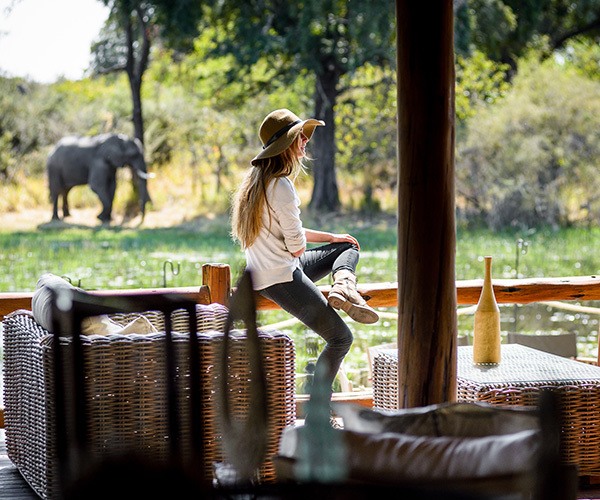 What then are the essentials? You don’t need to buy or bring any expensive items for your trip, but should choose them carefully and pack lightly. The right clothing and equipment will help you make the most of your trip.
What then are the essentials? You don’t need to buy or bring any expensive items for your trip, but should choose them carefully and pack lightly. The right clothing and equipment will help you make the most of your trip.
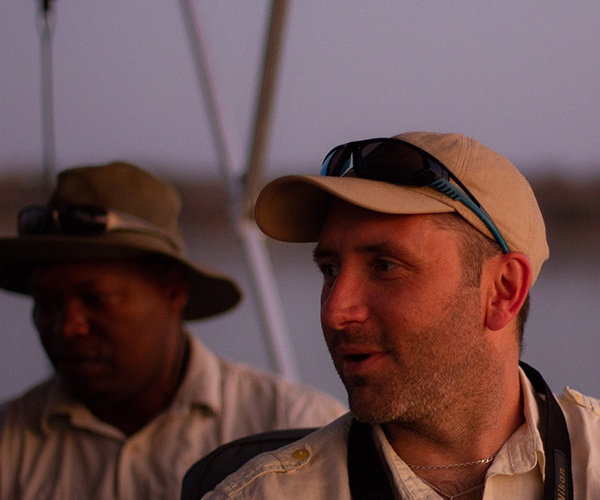 The single most important selection of what to bring on safari is your clothes. It’s not a fashion show, though the landscapes do make the most incredible backdrop for photographs.
Out in the bush it’s a wilderness: that’s what you’re coming for, after all. There are thorns and scratchy long grasses, and often biting insects, too. In order to protect yourself, be sure to bring long sleeve tops and long trousers. If you choose something light and loose fitting, you won’t get too hot in the sun, and it also reduces the likelihood of getting heat rash or being bitten by mosquitos at dusk. Comfortable walking shoes or boots are a must: the ground can be uneven, and you may walk quite some distance.
The single most important selection of what to bring on safari is your clothes. It’s not a fashion show, though the landscapes do make the most incredible backdrop for photographs.
Out in the bush it’s a wilderness: that’s what you’re coming for, after all. There are thorns and scratchy long grasses, and often biting insects, too. In order to protect yourself, be sure to bring long sleeve tops and long trousers. If you choose something light and loose fitting, you won’t get too hot in the sun, and it also reduces the likelihood of getting heat rash or being bitten by mosquitos at dusk. Comfortable walking shoes or boots are a must: the ground can be uneven, and you may walk quite some distance.
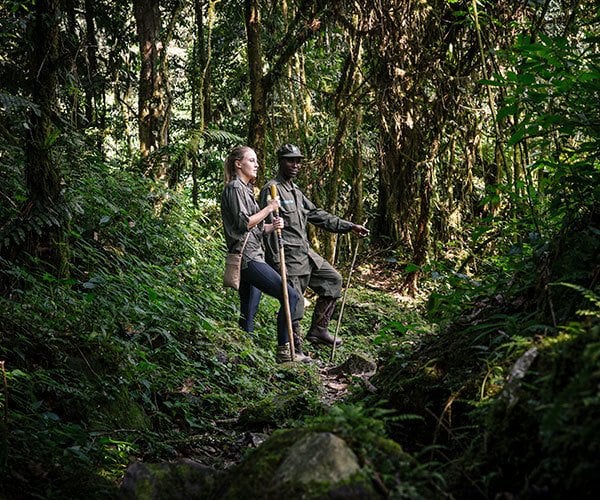 The colour of your clothing is important, though more so for bush walks than game drives. Animals see colours differently to humans, and can feel threatened if you stand out too much. White is a no no, and so too is black. The best thing is to pack natural coloured items that will help you blend in with your environment: you can’t go wrong with beige, sand, brown, or green.
Although many African safari destinations are hot in the day, first thing in the morning the temperature may still be quite cold. If you are sat in the back of a jeep on a game drive at dawn, you will want a light jumper or fleece to stay warm. The guide may well also give you a blanket to wrap around your knees, to make it particularly cosy.
In our ever more connected world, it’s hard to find opportunities to switch off. When you take a safari, you have the option to leave communication devices behind, and disconnect completely. If that’s not an option, be sure to bring a battery pack for your phone and perhaps a spare camera battery too; most lodges and camps do have electricity (often from solar panels), but the supply can be inconsistent.
The colour of your clothing is important, though more so for bush walks than game drives. Animals see colours differently to humans, and can feel threatened if you stand out too much. White is a no no, and so too is black. The best thing is to pack natural coloured items that will help you blend in with your environment: you can’t go wrong with beige, sand, brown, or green.
Although many African safari destinations are hot in the day, first thing in the morning the temperature may still be quite cold. If you are sat in the back of a jeep on a game drive at dawn, you will want a light jumper or fleece to stay warm. The guide may well also give you a blanket to wrap around your knees, to make it particularly cosy.
In our ever more connected world, it’s hard to find opportunities to switch off. When you take a safari, you have the option to leave communication devices behind, and disconnect completely. If that’s not an option, be sure to bring a battery pack for your phone and perhaps a spare camera battery too; most lodges and camps do have electricity (often from solar panels), but the supply can be inconsistent.
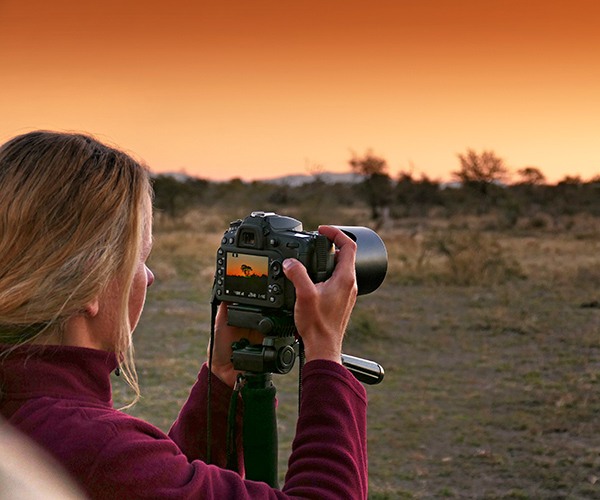 In our ever more connected world, it’s hard to find opportunities to switch off. When you take a safari, you have the option to leave communication devices behind, and disconnect completely. If that’s not an option, be sure to bring a battery pack for your phone and perhaps a spare camera battery too; most lodges and camps do have electricity (often from solar panels), but the supply can be inconsistent.
In our ever more connected world, it’s hard to find opportunities to switch off. When you take a safari, you have the option to leave communication devices behind, and disconnect completely. If that’s not an option, be sure to bring a battery pack for your phone and perhaps a spare camera battery too; most lodges and camps do have electricity (often from solar panels), but the supply can be inconsistent.
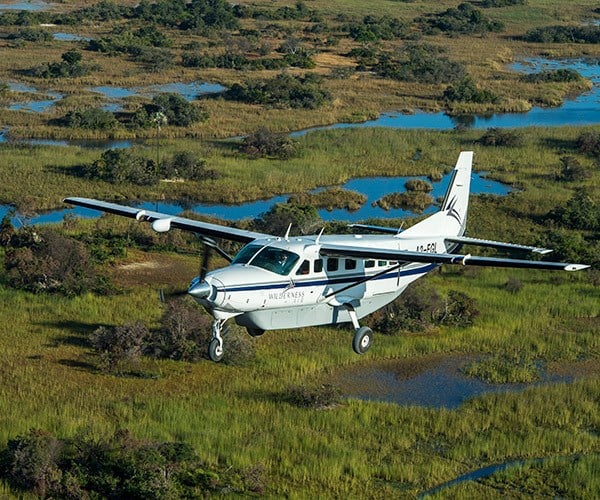 The last consideration is what luggage to bring. If you are travelling to remote locations, it is recommended that you bring a soft holdall rather than a large, hard sided case. This is because the light aircraft used to fly guests between concessions do not have a cargo bay: luggage is stacked underneath or behind the seats. The same is true in jeeps; it is easier to pack squashy bags than bulky ones.
Laura Burdett-Munns is Managing Director at Africa Exclusive. Africa Exclusive has been creating the finest tailor-made safaris since 1990, specialising in luxurious accommodation in beautiful remote places.
If you would like to be a guest blogger on A Luxury Travel Blog in order to raise your profile, please contact us.
The last consideration is what luggage to bring. If you are travelling to remote locations, it is recommended that you bring a soft holdall rather than a large, hard sided case. This is because the light aircraft used to fly guests between concessions do not have a cargo bay: luggage is stacked underneath or behind the seats. The same is true in jeeps; it is easier to pack squashy bags than bulky ones.
Laura Burdett-Munns is Managing Director at Africa Exclusive. Africa Exclusive has been creating the finest tailor-made safaris since 1990, specialising in luxurious accommodation in beautiful remote places.
If you would like to be a guest blogger on A Luxury Travel Blog in order to raise your profile, please contact us.Did you enjoy this article?
Receive similar content direct to your inbox.


I’ve heard some safari guides recommend camouflage clothing as you are more likely to blend into the environment. Is there any truth in that advice? As a middle-aged accountant I don’t currently have any camouflage clothing but I am happy to add some to my wardrobe if it is going to increase my numbers of sightings.
It’s all good advice. I learnt about the need to cover up very quickly. My trousers just weren’t long enough and the long grass got through to my shins causing some very nasty irritation and red patches.
I find layers is the best way of coping with the changes of temperature. If you do a night safari there’s still some residual heat from the day. Later on the temperature can drop so it’s best to have some more layers to hand.
I always thought that people in the jungles or safaris wear khaki just to blend with the surroundings. I didn’t know that some animals would find strong colors, even black or white, a threat and can endanger you. Also, good tips on the luggage to bring. I would’ve brought a small hard-case luggae on wheels just to make lugging it around easy.